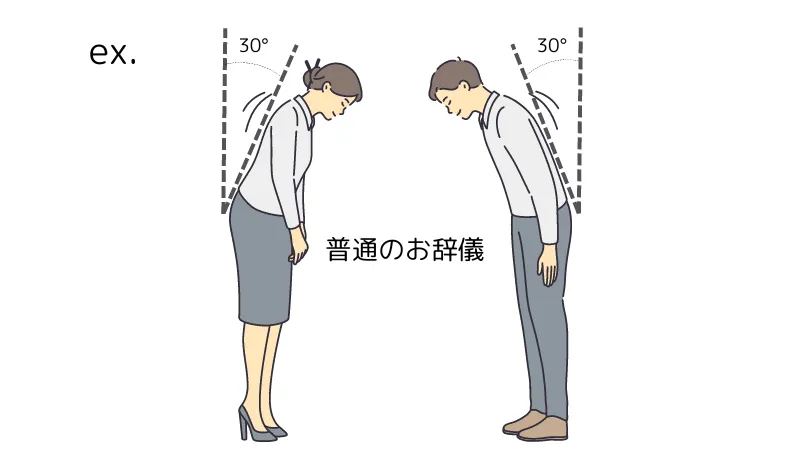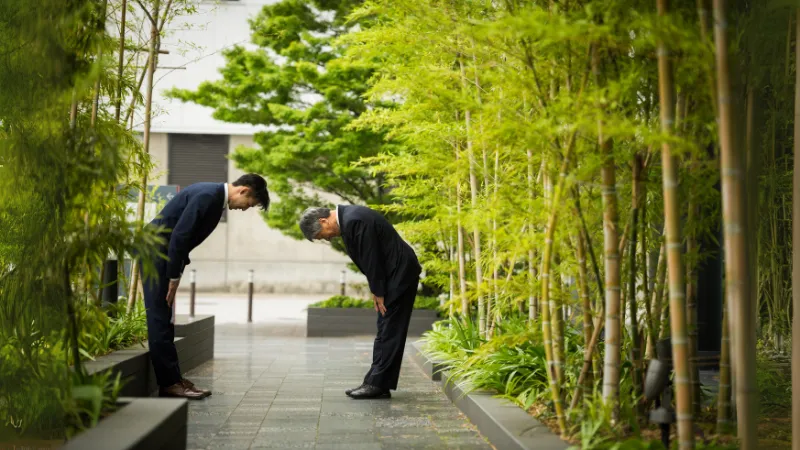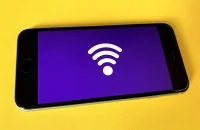Basics of Japanese Greetings|Explanation of Bowing Manners

Are you a foreigner or an international student living in Japan, puzzled to understand Japan's unique manners of greeting?
What this article touches on is the history and cultural background regarding greetings unique to Japan. In addition, we will explain in detail the uniquely Japanese culture of bowing.
< 本記事で得られること >
- Basics of Japanese Greetings and Cultural Background
- Types of bowing and their use in different situations
- Bowing Manners for Business and Everyday Life
Greetings are the knowledge you need to remember for smooth communication in Japanese society. Through this article, you will gain a deeper understanding of Japanese greeting culture and learn proper etiquette.
Basics of Japanese Greeting Culture

In Japan, greetings are an important part of everyday life. Here we will take a closer look at the meaning of greetings for Japanese people, basic types of greetings, and the role of bowing.
The Meaning of Greetings for Japanese
Greetings are more than just an exchange of words. It is a means of expressing respect and appreciation for the other person and of establishing smooth human relations. In Japanese culture, in particular, greetings are considered the basis of communication and are expected to be polite in all situations.
Basic types of greetings
There are various forms of greetings in Japan. Particularly typical ones are as follows.
- Morning greetings: "Good morning" and "Good morning".
- Daytime greeting: "Hello".
- Evening greeting: "Good evening.
- Words of gratitude: "Thank you" and "Thank you very much".
- Words used when parting: "Good-bye.
- Words said before and after meals: "Itadakimasu" and "Gochisosama
The above greetings are used depending on the date, time, and situation, and are intended to show respect and appreciation for the other person or thing.
Bowing as a basic form of greeting
The bow is a particularly important communication tool in Japanese greetings that can be used by all generations. The depth and duration of the bow must be used appropriately depending on the situation, as it indicates the degree of respect one has for the other person.
A proper greeting builds trust. Bowing is one of the most important aspects of life in Japan. Children in Japanese schools are taught these manners from an early age and learn mutual respect through greetings and bowing.
Even a single bow will lead to a deeper understanding of Japanese culture.
Bowing History and Cultural Background

Japanese bowing is more than a mere courtesy; it has deep cultural significance.
Next, let's delve into how bowing took root in Japanese culture and its historical background and connection to bushido.
Origin and History of Bowing
The custom of bowing has developed throughout Japan's long history.
The origin of bowing can be traced back to ancient Japan, but it was not until the Heian period (794-1185) that the form became clear. The court culture flourished at that time, and a high level of courtesy was demanded. This custom spread to the general populace and took root as a common courtesy in Japanese society as a whole.
The etiquette established during this period became the basis for later Japanese etiquette.
Relation between Bushido and Greeting Culture
Of particular note is the deep relationship between bushido and bowing. In Bushido, there was a culture that valued courtesy to the extent that it is said, "Rei ni hajimu ni koto (beginning and ending with a bow)," and bowing played a very important role in this culture.
In countries around the world, handshakes and hugs are common greetings. However, for the samurai, those greetings were too close to the other person and could be disrespectful, with the sword touching the other person. The reason why bowing became a greeting in Japan was because of the spirit of bushido, the respect for the other person.
Given these historical backgrounds, you can see that bowing is not just a physical movement, but a cultural act that expresses deep respect and gratitude to the other person.
Bowing is a very important part of communication in Japan. If you understand its background and culture, you will be able to greet people according to the situation.
Bowing Manners and Etiquette

By paying attention to the correct posture and hand position, you can better convey your respect for the other person. Here, we will explain in detail the position and manner of the hands when bowing.
Bowing hand position
The position of the hands when bowing depends on the situation and the degree of formality.
Generally, men bow with their hands naturally lowered at the side of their body, while women lightly fold their hands in front of them.
In formal settings, it is considered polite for both men and women to lightly fold their hands and hold them in front of the abdomen. This hand position is intended to more strongly express respect for the other person.
Proper posture of bowing as a courtesy
The correct posture for bowing is to keep your head and back as straight as possible, and tilt your upper body forward from the waist. Also, when bowing, be careful not to lower your face too much so as not to lose sight of the other person's face.
Basic bowing types
There are several different angles of bowing, but the three most common are

| type | angle | Situations in which it is used |
| Light bowing (nodding) | Bow lightly, leaning the upper body at an angle of about 15 degrees. | Daily greetings and light expressions of appreciation as you pass by each otherGreetings between colleagues at work and light expressions of appreciation for store clerks at stores. |
| Ordinary bow (salute) | General bowing with the upper body tilted at an angle of about 30 degrees | When you want to express your respect and gratitude to the other partyIn important business situations, such as at the beginning or end of a meeting, when meeting with a business partner, or when you are meeting with a superior or someone you have never met before. |
| Deep Bow (Most Respectful Bow) | The most polite form of bowing, with the upper body bent firmly at an angle of about 45 degrees. | When required at formal occasions such as weddings and funeralsWhen a serious mistake has been made in a business situation or when expressing special thanksFor more respect or apology, you may lean your body up to about 90 degrees |
Importance of social bowing

In Japan, bowing is not just a formality. It is an important tool for showing respect and facilitating human relations. A single bow can change the impression of a person and the quality of a relationship.
Let's now take a closer look at specific uses of bowing in different situations.
Bowing as a Business Manner
In business, bowing is the most basic manner of showing respect to others. In the Japanese business scene, bowing correctly to business partners, colleagues, and superiors directly leads to a relationship of trust. It is very important to show respect and sincerity to others through your actions.
For example, when visiting a business partner, bowing is one of the factors that determine the first impression. When entering or exiting a meeting room, do not bow lightly (bail), but salute respectfully at a 30 to 45 degree angle. At this time, it is important to pay attention to the time of eye contact and the timing of the bow to show sincerity toward the other party.
In business card exchange situations, it is considered polite to hand over a business card with a light bow (bail). It is also common to show respect with a deeper bow (the most respectful bow) to a business partner you are meeting for the first time.
Bowing in daily life
Bowing is also essential in everyday life. In daily greetings, such as when we meet our neighbors, or when meeting or parting with colleagues or friends, we give a light greeting (kaiyaku) to show our respect and friendliness to the other person. In occasions of gratitude, we bow (keiretsu), which is an ordinary bow to show our appreciation.
When apologizing for a mistake or inconvenience, a deep bow (the most respectful bow) should be given to convey deep respect and gratitude to the other party.
Bowing at the ceremony
Furthermore, ceremonies such as weddings and funerals require a particularly deep bow (the most respectful bow). For example, it is common for the bride and groom at a wedding to bow deeply (45 degrees or more) when thanking guests.
At funerals, bowing is an essential part of respect for the deceased. In such a formal setting, it is important to bow properly and not to spoil the mood of the occasion by observing decorum. For example, when greeting the bereaved family or offering flowers, one should bow normally (salute). In front of the deceased's portrait or in front of the casket, a deep bow (the most respectful bow) is used. It is very important as a final parting address to the deceased to show direct respect to the deceased.
Bowing is essential for maintaining smooth relationships. It should be done appropriately according to the relationship and position in each occasion, and as an expression of emotion appropriate to the situation.
Serious employment support to help you realize your dream of working in Japan!

Do you want to work in Japan?
Let us "Goandup" make that dream a reality!
【 Program Features 】
✅ JLPT N3 level Japanese language acquisition
✅ Thorough preparation for the specific skills test
✅ Full support for job hunting in Japan
Business-focused one-on-one lessons will help you find a job in Japan in the shortest possible time.
【 Program Menu 】
- Individual Japanese language lessons
- Intensive curriculum to obtain N3, especially specialized lessons for business Japanese that can be used at work.
- Intensive curriculum to obtain N3, especially specialized lessons for business Japanese that can be used at work.
- Preparation for the Specific Skills Test
- Customized materials for specific skill tests will be used to focus on frequently asked questions and learning to pass the test.
- Customized materials for specific skill tests will be used to focus on frequently asked questions and learning to pass the test.
- Resume and CV support
- To create resumes and CVs tailored to Japanese corporate culture, and to brush up on self-promotion and motivation for application.
- To create resumes and CVs tailored to Japanese corporate culture, and to brush up on self-promotion and motivation for application.
- Interview Preparation
- Guidance on areas for improvement through mock interviews and feedback based on corporate interview scenarios. Learn interview etiquette and behavior unique to Japan.
- Guidance on areas for improvement through mock interviews and feedback based on corporate interview scenarios. Learn interview etiquette and behavior unique to Japan.
- career consulting
- Provide introductions to companies that match the participant's career goals, select companies to apply to, and provide advice on the level of knowledge required by the companies to which the participant is applying.
- Provide introductions to companies that match the participant's career goals, select companies to apply to, and provide advice on the level of knowledge required by the companies to which the participant is applying.
- Chat Support
- In addition to one-on-one individual lessons, we also accept casual questions via DM (visa application, living support, assistance in finding a room, etc.).
If you are serious about your career in Japan, join us now!
▶︎ for more informationclick here.
We will do our best to support your success in Japan!
summary
In this article, we delve deeper into Japan's unique greeting culture and bowing etiquette from the following perspectives.
- For Japanese, greetings are an expression of respect
- Bowing is the basis of social life
- Bushido Influences Courtesy
- Use of bowing in different situations
- The Importance of Bowing in Business and Everyday Life
Bowing is not just a formality, but a means of communication that is deeply rooted in Japanese culture. We hope that the information presented in this article will help you to deepen your understanding of Japanese greetings and make them useful in your daily life.
Your support will help us!
Thank you for visiting Goandup Picks. Our mission is to provide you with more useful information to show the world what Japan has to offer.
Your support will help us to further enhance our activities, so please support us!






